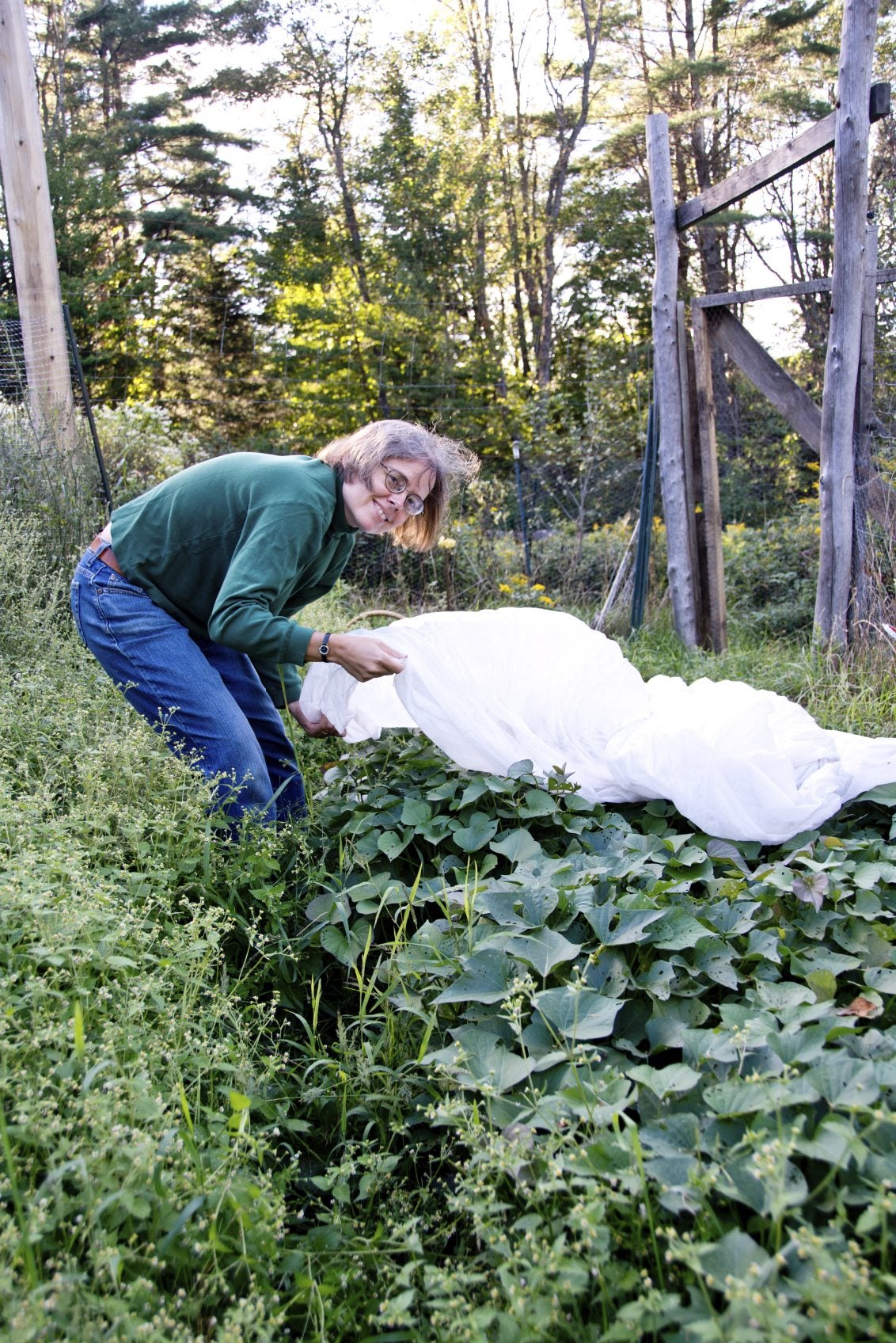Plant Covering Materials – Ideas For Covering Plants In Cold Weather


All living things need some sort of protection to keep them comfortable during the winter months and plants are no exception. A layer of mulch is often enough to protect plant roots, and in more northern climates, Mother Nature provides a layer of snow, which serves as a great winter covering for plants. However, many plants depend on a little extra protection to survive until spring. Read on to learn about covering plants in cold weather.
Is Covering Plants in Cold Weather Really Necessary?
Frost covering for many plants is of limited use, and the best way to protect plants, according to horticulturalists at University of Georgia Extension, is to ensure your plants are properly watered, fed and protected from pests during the spring and summer. Healthy plants are hardier and can withstand cold weather better than weak, unhealthy plants. Most importantly, plan carefully and choose plants that can survive in your growing zone. If you use plant covering materials, use them only during the cold spell and remove them as soon as the weather moderates. Young evergreens can suffer sunscald for the first two to five winters. A light-colored winter covering will reflect the light and keep the bark at a relatively consistent temperature. Be sure to water evergreens deeply before the ground freezes, as evergreens are unable to replace moisture lost to winter wind and sun.
Types of Winter Covering for Plants
Here are the most common plant coverings for protecting plants in cold weather or frosts.
- Burlap – This natural fiber is an effective winter cover for marginally hardy plants and works well as protection for young shrubs and trees. Wrap the burlap loosely around the plant, or better yet – create a simple tepee of stakes, then drape the burlap around the stakes and secure it with twine. This will prevent breakage that can occur when burlap becomes wet and heavy.
- Plastic – Plastic is definitely not the best winter covering for plants, as plastic, which doesn’t breathe, can trap moisture that can kill the plant in a freeze. You can use plastic in a pinch, however (even a plastic garbage bag), but remove the covering first thing in the morning. If a sudden cold snap is predicted, an old sheet or a layer of newspapers offers safer protection than plastic, which can do more harm than good.
- Polypropylene or polypropylene fleece – You can find many types of polypropylene plant covering materials at garden supply stores. The covers, often known by names such as garden fabric, all-purpose fabric, garden quilt or frost-protect, are available in various thicknesses with varying degrees of protection. Polypropylene is useful in many cases because it is lightweight, breathable, and allows a certain amount of light to enter. For large applications, it is available in rolls. It can be laid directly on the ground or wrapped around a framework made of stakes, bamboo, garden fencing, or PVC pipe.
Gardening tips, videos, info and more delivered right to your inbox!
Sign up for the Gardening Know How newsletter today and receive a free copy of our e-book "How to Grow Delicious Tomatoes".

A Credentialed Garden Writer, Mary H. Dyer was with Gardening Know How in the very beginning, publishing articles as early as 2007.
-
 How To Make A Bouquet Garni Or Herb Bundle For Cooking
How To Make A Bouquet Garni Or Herb Bundle For CookingIf you’re a great cook, you may have made an herb bundle before. If this is a new idea, learn how to add sparkle and interest to your dish with a bouquet garni.
By Amy Grant
-
 ‘Coral Charm’ Peony Care For Sublime Semi-Double Peonies With Lush Salmon Pink Flowers
‘Coral Charm’ Peony Care For Sublime Semi-Double Peonies With Lush Salmon Pink FlowersPeonies are known for their soft baby pink or magenta tones, but if plushy coral blooms are your thing, here’s our guide to the ultimate ‘Coral Charm’ peony care
By Tonya Barnett